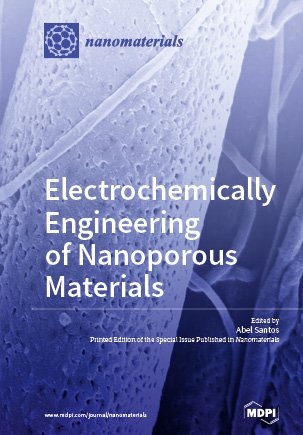
Electrochemically Engineering of Nanoporous Materials
Seiten
2018
MDPI (Verlag)
978-3-03897-268-6 (ISBN)
MDPI (Verlag)
978-3-03897-268-6 (ISBN)
- Keine Verlagsinformationen verfügbar
- Artikel merken
ca. 200 words; this text will present the book in all promotional forms (e.g. flyers). Please describe the book in straightforward and consumer-friendly terms.
Electrochemical engineering of nanoporous materials is a cost-effective and facile synthesis approach that enables the production of a range of nanoscale materials with controllable dimensions and properties. Recent decades have witnessed extensive research activity into the advanced engineering of nanoporous materials, from fundamental studies to applied science. These nanomaterials offer a set of unique and exclusive advantages for a wealth of applications, including catalysis, energy storage and harvesting, electronics, photonics, sensing, templates, and membranes.
This Special Issue is dedicated to recent research advances in electrochemical engineering of nanoporous materials and their application across several disciplines and research fields. The broad and interdisciplinary applicability of these nanomaterials will be of profound and immediate interest for a broad audience, ranging from physicists, chemists, engineers, materials scientists, bioengineers, and nanomedicine experts.
Electrochemical engineering of nanoporous materials is a cost-effective and facile synthesis approach that enables the production of a range of nanoscale materials with controllable dimensions and properties. Recent decades have witnessed extensive research activity into the advanced engineering of nanoporous materials, from fundamental studies to applied science. These nanomaterials offer a set of unique and exclusive advantages for a wealth of applications, including catalysis, energy storage and harvesting, electronics, photonics, sensing, templates, and membranes.
This Special Issue is dedicated to recent research advances in electrochemical engineering of nanoporous materials and their application across several disciplines and research fields. The broad and interdisciplinary applicability of these nanomaterials will be of profound and immediate interest for a broad audience, ranging from physicists, chemists, engineers, materials scientists, bioengineers, and nanomedicine experts.
School of Chemical Engineering, The University of Adelaide
| Erscheinungsdatum | 06.10.2018 |
|---|---|
| Mitarbeit |
Gast Herausgeber: Abel Santos |
| Verlagsort | Basel |
| Sprache | englisch |
| Maße | 170 x 244 mm |
| Themenwelt | Naturwissenschaften ► Chemie ► Allgemeines / Lexika |
| Technik ► Maschinenbau | |
| Schlagworte | Anodization • electrochemical etching • Fabrication of nanoporous materials • Nanoporous materials for biomedical applications • Nanoporous materials for catalysis • Nanoporous materials for electronics • Nanoporous materials for energy storage and harvesting • Nanoporous materials for membrane science • Nanoporous materials for optics and photonics • Nanoporous materials for sensing and biosensing |
| ISBN-10 | 3-03897-268-1 / 3038972681 |
| ISBN-13 | 978-3-03897-268-6 / 9783038972686 |
| Zustand | Neuware |
| Haben Sie eine Frage zum Produkt? |
Mehr entdecken
aus dem Bereich
aus dem Bereich
Eine chemische Warenkunde
Buch | Softcover (2022)
Wiley-VCH (Verlag)
CHF 41,85


